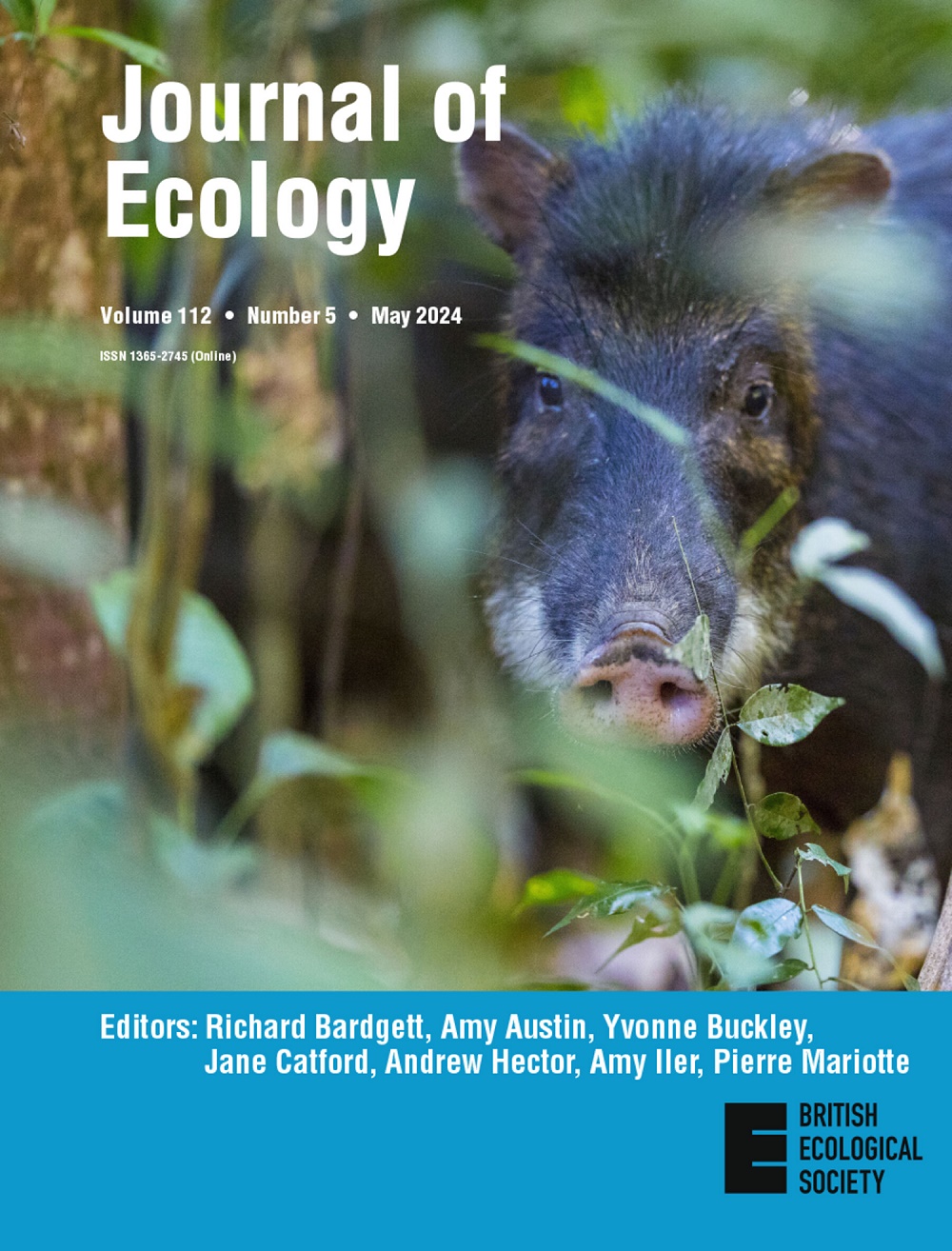山区道路沿线植物群落对气候变暖响应的早期检测
IF 5.6
1区 环境科学与生态学
Q1 ECOLOGY
引用次数: 0
摘要
全球变暖正导致物种向高纬度和高海拔地区转移,导致植物群落的重组和相关的群落嗜热化(即嗜热物种的数量或覆盖增加,有时以牺牲嗜热或冷适应物种为代价)。考虑到在范围变化的幅度和方向上通常观察到的巨大变化,量化群落热干化可能提供一种更灵敏的方法来检测短时间内和有限空间范围内的气候变化影响,因为它整合了多个物种之间的范围变化,同时也考虑了丰度的变化。在这里,我们结合了(i)物种水平范围变化和(ii)沿着瑞士三条山路的群落推断温度变化(热干化)的评估,以询问植物群落是否对10年期间的气候变暖做出了反应,以及群落热干化是否是早期发现这些变化的敏感指标。我们发现,仅基于存在-缺失数据,在10年的研究期间,群落热干化信号为+0.13°C。尽管在海拔梯度的下半部分,物种的上限向上移动,物种丰富度在高海拔地区下降,但如果将群落推断的温度与物种覆盖加权,则无法检测到显著的热干化现象。在研究期间从当地群落获得或失去的物种的低盖度值,以及它们与当地物种相似的物种特定温度,解释了盖度加权模型与未加权模型中检测到的热干化之间的差异。合成。我们的研究表明,在瑞士西部阿尔卑斯山脉,植物物种正在沿着路边迅速向更高的海拔转移,这在10年内转化为植物群落中可检测到的变暖信号。然而,物种水平的范围变化和群落水平的变暖效应主要基于低盖度的增加/减少物种,这使得在考虑盖度变化时无法检测到群落的干热信号。因此,我们建议将非加权方法作为早期发现群落水平对气候变化响应的额外选择,最好与物种水平范围变化的评估相结合。本文章由计算机程序翻译,如有差异,请以英文原文为准。




Early detection of plant community responses to climate warming along mountain roads
求助全文
通过发布文献求助,成功后即可免费获取论文全文。
去求助
来源期刊

Journal of Ecology
环境科学-生态学
CiteScore
10.90
自引率
5.50%
发文量
207
审稿时长
3.0 months
期刊介绍:
Journal of Ecology publishes original research papers on all aspects of the ecology of plants (including algae), in both aquatic and terrestrial ecosystems. We do not publish papers concerned solely with cultivated plants and agricultural ecosystems. Studies of plant communities, populations or individual species are accepted, as well as studies of the interactions between plants and animals, fungi or bacteria, providing they focus on the ecology of the plants.
We aim to bring important work using any ecological approach (including molecular techniques) to a wide international audience and therefore only publish papers with strong and ecological messages that advance our understanding of ecological principles.
 求助内容:
求助内容: 应助结果提醒方式:
应助结果提醒方式:


